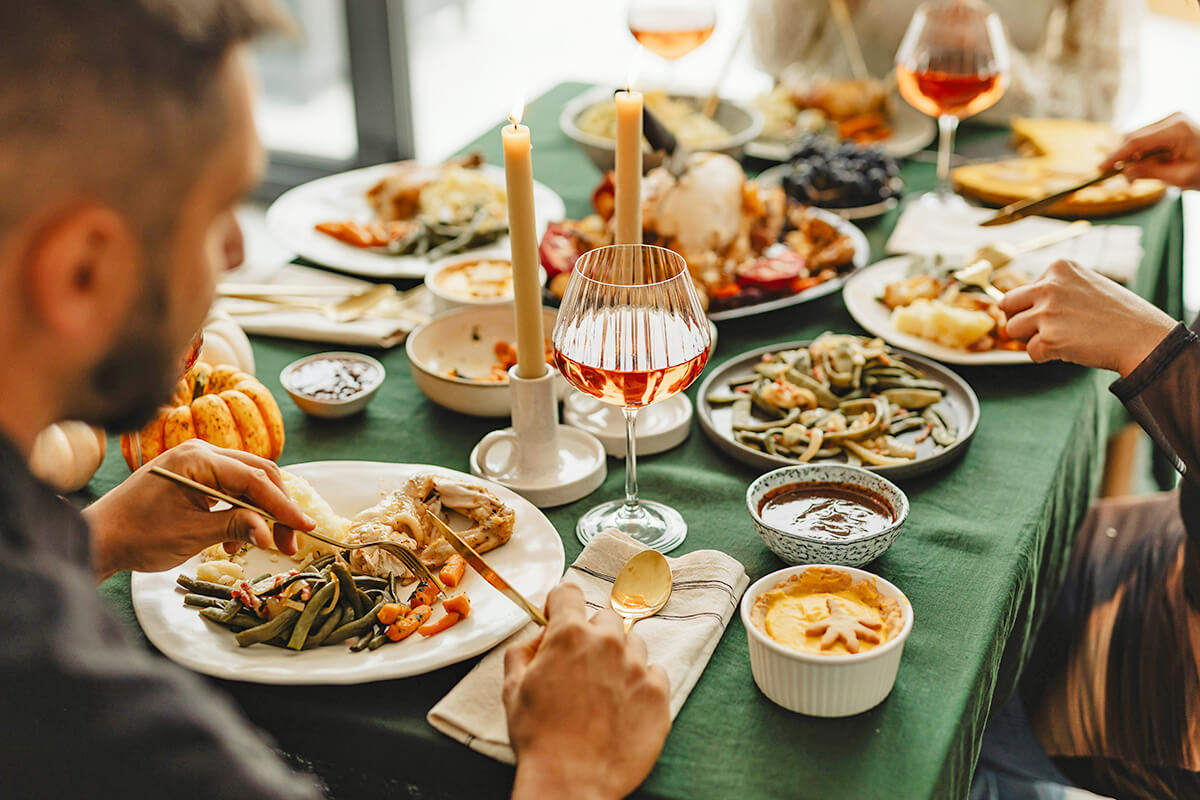One of the most iconic seasonal images is a big, golden, perfectly roasted holiday turkey grandly displayed on a serving platter (the “Norman Rockwell moment,” if you will). Every year around Thanksgiving, you’ll see a slew of articles on thawing the bird, fixing dinner disasters, and, of course, what to do with the leftovers. Surprisingly,…
Roasting a Turkey for Crisp Skin
Here’s the thing about roasting pans: They’re actually not ideal for roasting your bird. Their deep shape and solid side walls trap moisture and prevent air circulation. This means the bird’s underside steams, rather than roasting and browning. That’s why many newer pans come with a rack, which lifts the bird out of the drippings and allows air to circulate around its entire surface. Not only does the rack help the skin to brown all over, but it also helps the bird cook more evenly.
Here’s how to DIY a rack if you don’t have one: Pull out a long sheet of aluminum foil — at least 3 to 4 feet — and cut it. Next, starting at one end, crumple and squeeze the foil into a long rope or “snake.” Place this rope on a flat surface and bend it into an “S” shape or a question mark. Make sure the shape fits inside your pan but is large enough to support the turkey. Position the foil in the pan, then carefully place the turkey on top. Ensure the turkey sits neatly on the foil rope and won’t fall off when you lift and move the pan.
More from our network
House Outlook is part of Inbox Studio, which publishes content that uplifts, informs, and inspires.
Airflow Makes for a Perfect Turkey
You might be wondering why making an “S” shape or question mark is necessary. Why not just a ring? Well, the whole point is to allow air to circulate around and under the turkey, and you don’t get that with a closed shape such as a ring. These curved lines create pockets for airflow underneath the bird, which is exactly what you want.
You should also use a roaster with low sides, similar to the shallow rectangular pans you often see in restaurants, rather than a traditional deep roaster (though if that’s all you have, the foil trick still helps). In a pinch, you’re better off using a sheet pan, as its low sides won’t block airflow. Just be sure to choose one with enough of an edge to keep the drippings from spilling over.



















